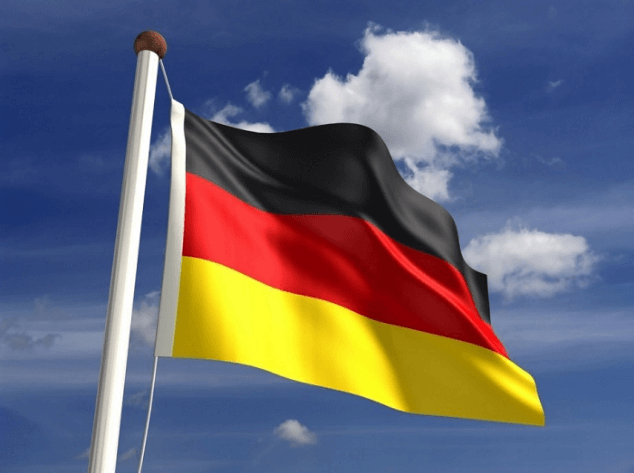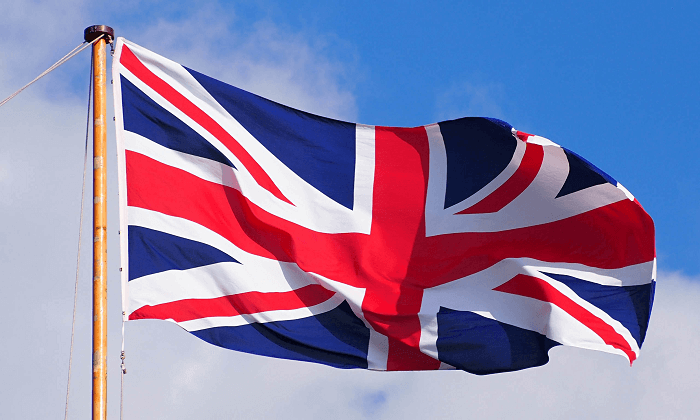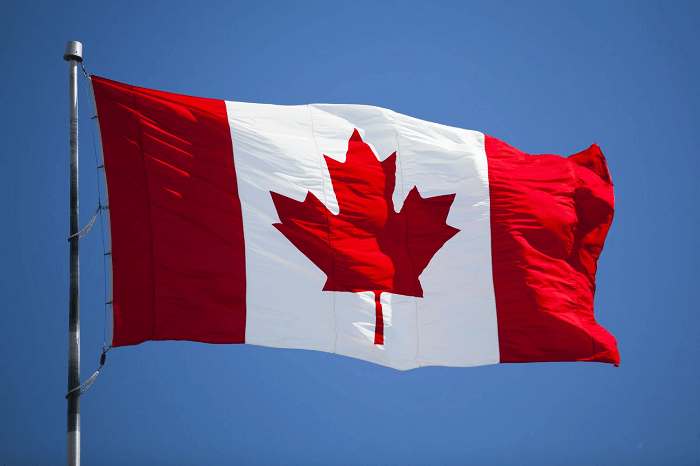Top 10 Economies In The World of 2021A complex system of linked trading, consumption, and production activities makes up an economy, ultimately deciding how resources are distributed among all the players. The necessities of those who work and live within the economy are fulfilled through manufacturing, consumption, and distribution of goods and services. A country, a region, a single sector, or even a family may be represented by an economy. An economy is a collection of interconnected production and consumption processes that ultimately decide how resources are distributed within a community. The demands of persons who live there and conduct business there are met by producing and consuming products and services. Market-based economies, also called free market economies, are self-regulatory and allow the production and distribution of goods in response to customer requests and demand. Government agencies that control command-based economies decide what goods are manufactured, in what amount and quantities, and at what cost. Few economies in the modern world are completely market- or command-based. An entity can be a country or a small town, an economy includes all of the activities connected to the manufacture, consumption, and trade of goods and services in that entity. Every economy is different. Each is shaped by the resources, laws, cultures, histories, and geographies that are unique to it. Each change as a result of the individuals' decisions and behaviors. These choices are decided using a combination of communal or hierarchical decision-making and market transactions. Types of Economies:-Few countries today are solely dependent on the free market or the command system. But the majority prefer to select one of these hypotheses over the other. 1. Market-Based Economies "Free market" or market-based economies let firms and individuals freely exchange products and services in accordance with supply and demand. 2. Command-Based Economies Command-based economies rely on a centralized authority that manages the quantity produced, the cost of commodities, and their distribution. In such a system, the industries that are deemed important are owned by the government on behalf of the users of those industries. Competition between businesses is discouraged or outlawed. Prices are regulated. A command-based economy is necessary for communism. North Korea and Cuba are recent instances. Supply and demand are attempted to be replaced by a command-based economy. 3. Mixed Economies Modern societies seldom have completely free markets since there is typically some form of central planning or government interference. Even the US may be described as having a mixed economy. Although it doesn't need manufacturing, it does have some control over it. Type of Study Of The Economy1. Microeconomics Microeconomics examines how individuals and corporations act to comprehend their motivations for doing so and how their choices impact the overall economy. Microeconomics investigates how a certain value is associated with a good or service. It looks at how people work together and collaborate in the workplace. Microeconomics frequently focuses on economic trends, including how personal decisions and actions affect shifts in production. It is obvious that marketing and psychology theories have an impact on microeconomics. 2. Macroeconomics Macroeconomics, as the name suggests, examines the whole situation. It is the study of components that impact the real economy, such as how inflation and price increases affect it. It aims to monitor and comprehend the monetary indicators, such as changes in consumer spending, unemployment rates, and gross domestic product (GDP), that, over time, reveal an economy's success or failure. Macroeconomics is the study of the behavior of the economy as a whole. Gross Domestic Product (GDP)The full value of finished items and services produced within a nation's borders for a specific period, commonly a year, is measured as the gross domestic product (GDP). The most frequent technique for measuring the size of an economy is to utilize GDP. The most popular technique for measuring GDP is the expenditure approach, which totals expenditures on new consumer items, new investments, government spending, and the value of net exports to determine GDP (exports minus imports). With the phases of various economic cycles and longer-term economic growth in the background, countries' GDPs fluctuate throughout most of the world. However, it's fascinating to observe that notwithstanding these ups and downs, the leading economies, as determined by GDP, don't shift easily from their rankings. Here are the leading economies of the world in the year 2021:- 1. United States
The actual GDP of the US is predicted to be $20.94 trillion. The services industry of the US is far more established and technologically advanced. This fact accounted for around 80% of the overall production. Hence the greatest businesses and the role played by the enterprises delivering their services in the industries of tech., retail, banking, and healthcare play a key role in the world arena. In 2021, economic growth in the United States was the best since 1984 (5.7%), but in the first quarter of 2022, the GDP declined. The United States GDP declined 1.5% during the 1st quarter of the year 2022, a significant turnaround from the 6.9% annual rate of growth in the final quarter of 2021. The GDP fall in the 1st quarter arose from a widening trade imbalance, with the growth in imports substantially surpassing the rise in exports. The trade deficit fell to US$ 87.1 billion in April from US$ 107.7 billion in March, indicating that trade might have less drag on the country's GDP growth in the 2nd quarter. Imports fell, showing a cooling thirst for foreign products from consumers and companies. The U.S. is witnessing a historically tight labor market, with May 2022 representing the 17th consecutive month of employment increases. The rate of unemployment was at 3.6%. 6.7 million new opportunities were generated in 2021, and 2.4 million from January to May 2022. Employment is on pace to recover to its pre-pandemic levels in the 2nd half of this year. However, as of May 2022, the country's economy is 0.8 million jobs less than its pre-pandemic level. The CPI- Consumer Price Index was over 8% in the months of March, April, and May 2022. Whereas in April inflation eased down to 8.3% from 8.5% and in May it arrived higher than predicted, jumping to a 40-year high of 8.6%, as food and energy costs leaped to record peaks. In June, the Federal Reserve hiked its benchmark interest rate by 0.75 % points, the highest rise since 1994. The Fed indicated it would keep hiking rates this year at the fastest rapid pace in years. This was the 3rd interest rise in interest rates in 2022, after a quarter % point rise in March, and a half % point rise in May. According to the Federal Reserve, amid increasing interest rates at the most vigorous rate since the 1980s, recession chances are mounting. Increasing inflation and the monetary policy reaction add unpredictability to the United States' economic future. 2. China
The Chinese economy has undergone extraordinary expansion during the previous several decades. This fact has enabled the nation to grab the highly wanted second spot in the list of top 10 economies of the globe. The actual GDP of China in the year 2020 was $14.72 trillion. China's economy accomplished a V-shaped rebound in the year 2020 and emerged as the only major country to claim positive economic growth of GDP in 2020. In 2021, changes in the domestic industrial structure presented tremendous potential prospects, including new technical revolutions in 5G, new energy sources, new materials; import substitutes due to global supply chain transformation; online economy; new urbanization. Meanwhile, there are "opportunities in crisis" from the slow recovery of the global economy, low (negative) interest rates in developed countries, and trade frictions, including net capital inflows and financing opportunities; return of US-listed Chinese shares and acquisition of quality assets; RMB internationalization; oversea investments. China's GDP increased by 8.1 percent in 2021 to almost $ 18 trillion despite obstacles, including disease resurgences and a challenging foreign environment. According to the official figures released by the National Bureau of Statistics (NBS), China's economy grew by four percent in the fourth quarter of last year, slowing from the 4.9 percent growth in the third quarter, rounding off the full year's growth rate to 8.1 percent in 2021 on oversea investments. Fourth quarter GDP climbed by 4% from a year earlier, China's National Bureau of Statistics (NBS). Though slower than growth in the third quarter, it was stronger than the 3.6% gain expected by a Reuters survey. 3. Japan
Japan's GDP rose by 1.7 percent in 2020, bolstered by a good comeback later in the year after a Covid-19 disease outbreak dip. Gross domestic product (GDP) expanded at an annualized pace of 5.4 percent in the months of October-December compared to the previous quarter, according to initial government figures published today. The economy rebounded from a revised 2.7 percent decline in the months of July-September. Improvement in the private sector's consumption spending and exports resulted in economic expansion in Japan throughout October-December. This happened when Japan entirely abolished a Covid-19 emergency on 30 September, stimulating economic activity, notably in the business and transport industries. Japan's GDP expanded by 1.7 percent in 2021, after a 4.5 percent decrease in 2020 and a 0.2 percent dip in 2019. Japan's economy expanded by 0.6 percent in 2018. Japan's power consumption climbed by 1.3 percent from the year 2020 to 875TWh in the year 2021, according to statistics from the national power agency, the Organization for Cross-Regional Co-Ordination of Transmission Operators. But the economy of Japan is now under increased strain after the government applied its Covid-19 semi-emergency measures in key commercial and industrial districts, particularly Tokyo, Nagoya, and Osaka, last month. The number of illnesses in the nation remained high amid the expansion of the Omicron type, with daily cases hitting 105,570 on 5 February, by the health ministry. Tokyo is now proposing a third vaccination launch. Japan's vehicle production and perhaps exports are also anticipated to be under strain as the country's top auto company Toyota has revised its worldwide output goal for the April 2021- March 2022 fiscal year on prolonged motor parts scarcity induced by the Covid-19 pandemic. Japan's domestic automobile manufacturing dropped for a 2nd consecutive year in 2021. 4. Germany
Considering to the Federal Statistical Office (Destatis), GDP in 2021 was 2.7% greater than in 2020 (in price-adjusted terms). At a news conference in Wiesbaden, Georg Thiel, the president of the Federal Statistical Office, said that economic activity in 2021 strongly relied on coronavirus infection rates and the corresponding containment measures. Although economic production has not yet reached pre-crisis levels, the German economy rebounded from its fall in the previous year despite the continued pandemic and growing supplies and material shortages. The GDP in 2021 was still 2.0% less than it was in 2019, the year before the pandemic began. The modest improvement in business and services. Experts claim that economic activity increased across practically all industries in 2021 compared to the crisis year before it. The manufacturing sector's price-adjusted gross value added increased considerably year over year by 4.4%. Most service industries had significant gains compared to 2020. For instance, business services, which include engineering operations, legal and tax advice, and research and development services, showed a 5.4% increase in economic production. Due to persistent constraints brought on by the pandemic, economic growth in the sector that, includes commerce, transportation, lodging, and food services, was a little slower at 3.0%. Only the construction industry, which in 2020 seemed to be unaffected by the epidemic, had a minor fall in production year over year of 0.4% in 2021. The statisticians estimate that price-adjusted consumer expenditure stabilized in 2021 at a low level that was still very low compared to pre-crisis levels. In addition to exceeding its already high level of 2020 by 3.4% in price-adjusted terms during the second year of the epidemic, government spending was a major driver of growth for the German economy in 2021. The government's increased spending was mostly due to the provision of free, fast antigen tests and universal coronavirus vaccinations beginning in the spring of 2021, as well as the operation of testing and vaccination facilities. After price adjustments, Germany exported 9.4% more products and services in 2021 than in 2020, reversing the severe decreases witnessed the year before in international commerce. In the same time frame, imports also increased by a price-adjusted 8.6%. Thus, Germany's international trade in 2021 fell short of its level in 2019. 5. United Kingdom
The average yearly rise of the UK's Economy between the years 1999 and 2008 was 2.8 percent. Economic growth is perhaps most likely to slow down because of a decrease in private consumption and the dampening of fixed investments under the unpredictable circumstances caused by the BREXIT. Still, through its real GDP of approx. $2.76 trillion, the United Kingdom will continue to retain its place among the top Ten economies in the world. The British economy grew by 7.5 percent in 2021, official estimates revealed, rebounding from its disastrous 9.4% fall in 2020 when pandemic limitations restricted output. On a quarterly basis, U.K. GDP- Gross Domestic Product is estimated to have grown by 1% in the final 3 months of the year. It reflects a downward revision 1% increase in the prior period, the Office for National Statistics (ONS) announced on Friday. In December, GDP decreased by 0.2 percent as the Omicron Covid-19 variant needed more care and prevention measures, but economists polled by Reuters had expected a more devastating 0.6% loss. The major contributors to the quarterly increase in the output were "human health & social work duties driven by rising GP visits at the beginning of the quarter," in accordance with the ONS, as well as a "significant rise in coronavirus (Covid-19) cases and tracing activities and the outgrowth of the vaccination program." The ONS stated economic output in the 4th quarter remained 0.4% less than its pre-pandemic peak (in the 4th quarter of 2019). However, the omicron variant did not bring the severe setback earlier projected in November; the U.K. economy has many difficulties. The Bank of England presently predicts inflation to peak at 7.2 percent in April, and it has enforced back-to-back hikes in interest rates for the very first time since 2004, increasing the main Bank Rate from 0.1% to 0.5%, with more tightening planned. However, the nation's energy regulator has hiked its price cap by £693 ($938) per year starting from April 1 owing to soaring energy prices, heaping additional hardship on millions of individuals. The Bank of England also cut its GDP growth estimates last week, cautioning that the impact of inflation means the economy is likely to increase by 3.75% in 2022 instead of the 5% it initially predicted. 6. India
Among the major economies, the Indian economy has also had the quickest growth. According to preliminary projections by the National Statistical Office (NSO), the Indian economy has completely recovered to the real GDP level of 2019-20 before the epidemic by 2021-2022. More specifically, the Minister said that according to preliminary projections by the National Statistical Office (NSO), the Indian economy would have completely regained its pre-pandemic real GDP level of 2019-20 in 2021-2022. The real GDP growth rate for 2021-2022 is 8.7%, which is 1.5% higher than the real GDP growth rate for 2019-20. Due to the recent global crisis, several international organizations have revised downward their growth projections for several nations, including India, for the fiscal years 2022-2023 and 2023-2024. However, the revised growth for India is still higher than that of the majority of advanced and emerging market economies, according to the Minister. The Minister said in May 2022; the Central Government would lower the Central Excise Duty on gasoline and diesel by Rs. 8 and Rs. 6 per liter, respectively. This will benefit the poor and middle class by boosting the economy, increasing consumption, and controlling inflation. The Minister added that recent government initiatives, such as raising the customs duty on imported gold from 10.75 to 15 percent, imposing a cess of ? 17,000 per tonne (by way of special additional excise duty, or SAED) on domestic crude, and imposing SAED/cess rates of ? 11 per liter and ?4 per-liter shipments of diesel and aviation turbine fuel are likely to have a positive effect on the government's tax collections. The Minister also noted that compared to last year, GST receipts increased by 36.4% in the first quarter of 2022-23, improving the government's financial condition. A recent change in GST rates is likely to improve Government's revenue collection substantially. 7. France
The estimated GDP for France is $2.63 trillion. Currently, the service sector accounts for more than 70% of the country's GDP. Additionally, France dominates the automobile, railroad, and aircraft industries on a worldwide scale. The GDP of France was valued at 2937.47 billion US dollars in 2021, considering to official statistics from the World Bank. The GDP value of France represents 2.20 percent of the global economy. The comeback in French GDP was faster than projected, hitting an average of 7% last year, according to early estimates from INSEE released on January 28, 2022. This unprecedented level, not seen in 52 years, is attributed in particular to the unexpected increase in activity, up 3.1%, in the third quarter of 2021. Although the average level of yearly GDP is 1.6% below the average level for 2019, quarterly GDP recovered to its pre-crisis level in the third quarter of 2021. It decisively surpassed it in the fourth quarter (+0 .9% in comparison to the fourth quarter of 2019). Thanks to this considerable rise in its yearly growth, the French economy is one of the most active in Europe. By contrast, eurozone GDP rose 5.2% last year, according to Eurostat. While European economic growth has made up partly after the epidemic, France and Italy (+6.5%) have witnessed the biggest recoveries. Germany, which had projected a more moderate reduction in its GDP in 2020 (-4.6%), saw its economy increase by 2.8% in 2021. The IMF forecasts a continued robust comeback this year in the eurozone, with GDP growth projected at 3.9%. 8. Italy
Italy is the third-largest national economy in the EU and a well-advanced market. The nation is also widely renowned for its important and inventive corporate economic sector, an industrious and competitive agriculture industry. The real GDP of Italy is projected to be $1.88 trillion, making it the seventh biggest economy on the globe. The Italian economy increased by 6.5% in 2021 and had overcome most of the disease outbreak production losses by the year-end. However, the short-term prognosis is clouded by persistent supply interruptions and dramatically increasing energy prices. Eroding buying power and declining consumer confidence are projected to impair real GDP growth in the short future, notably consumer services. While COVID cases spiked in the opening weeks of the year 2022, high vaccination rates are anticipated to prevent a severe tightening of prevention strategies and actual output from contracting in the initial months of the year. Considering the current wave is intense but short-lived, economic activity is predicted to restore speed in the 2nd quarter of 2022 and continue on its growth path in the second half of the year. Consumer spending, backed by better labor market conditions and diminishing concern due to the pandemic, is predicted to sustain GDP, with the domestic saving rate gradually reverting to pre-crisis levels. Following the rapid comeback in 2021, investment expenditure growth is anticipated to decrease during 2023 but continue to rise substantially, spurred by measures spelled out in Italy's Recovery and Resilience Plan. The external climate is likely to continue to be favorable, prolonging the robust performance of export sales of the previous year. Services are anticipated to progressively contribute to export development, led by the steady recovery of revenue from international tourism. Overall, real GDP growth is predicted to be 2.3% in 2023. Driven by energy costs, HICP inflation grew sharply in the 2nd half of 2021 and averaged 1.9% over the entire year. Energy prices are predicted to peak during the 1st quarter of 2022. They are forecast to continue at elevated levels throughout the entire year, with greater energy prices likely to drive up food prices further. Wage pressure is anticipated to grow relatively gradually, given most employment contracts in the industrial sector have recently been extended, and labor market slack continues to exist. Inflation is predicted to soar to 3.8% this year, before falling down to 1.6% in 2023. 9. Canada
The GDP growth of Canada is assessed at $1.64 trillion, making it the 9th biggest economy in the globe. While holding 9th rank among the top international economies, Canada is only one spot ahead of South Korea. After the biggest economic decline since 1945 (a fall we estimate at 5.5% of GDP), the economy would rise enough to significantly overcome the losses of 2020. Strong spending and a comeback in exports will provide the Canadian economy with a boost. Bringing ahead government investment projects really should offer a push to Canadian economic development. Real gross domestic product climbed 1.6% in the 4th quarter, after gaining 1.3% in the previous quarter of 2021. Inventory buildups greatly contributed to GDP in late 2021 as stocks grew in manufacturing and wholesale. Conversely, the deferral of company investments and a downturn in the housing market would restrict the scope of the rebound. Widespread distribution of vaccination commencing in the summer of 2021 might allow the Canadian economy to increase by 4.5% or more. A subsequent deployment would restrict growth to 4%. In any scenario, a return to pre-pandemic exercise levels will have to wait until 2023. Beyond the virus, worldwide uncertainties remain high, and protectionist impulses continue to pressure the possibilities for an export-oriented economy such as our own. The Bank of Canada will maintain its program of extreme monetary stimulus until at least 2023. 10. South Korea
South Korea's record of economic success is maintained by its capacity to adapt to the growing rate of global change. By nominal GDP, it is the 10th biggest economy worldwide and the 4th largest in Asia. Its rapid transition following the conclusion of the?Korean War in 1953?turned the nation into an industrial powerhouse and opened its borders to global economies. Its export-oriented policies and innovation investments were key in building the economy into what it is today. Before moving on to heavier industries like the production of iron and steel, and chemicals, the first sectors chosen for economic expansion were textiles and light manufacturing. The nation nonetheless maintains one of the fastest-growing developed nations in the world, after the Great Recession. According to the real GDP projection, the economy of South Korea ranks 10th and is valued at $1.63 trillion. The list was generated using the estimations given by the World Bank World Development Indicators (WDI) for the calendar year 2020. During 2021, the South Korean economy increased by 4.1 percent over the previous year. North Korea's per capita gross national income (GNI) amounted to 1.42 million won last year. At 40.4 million won, the South Korean equivalent was 28 times greater. The Gross Domestic Product (GDP) of South Korea has valued at 1798.53 billion US dollars in the year 2021, as per the official statistics obtained from the World Bank. The GDP value of South Korea constitutes 0.81 percent of the entire economy.
Next TopicTop 10 LED TV Brands in India
|
 For Videos Join Our Youtube Channel: Join Now
For Videos Join Our Youtube Channel: Join Now
Feedback
- Send your Feedback to [email protected]
Help Others, Please Share










